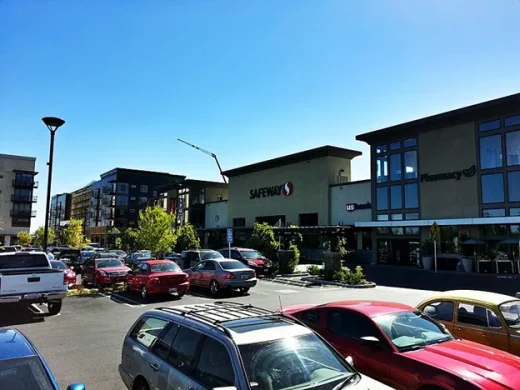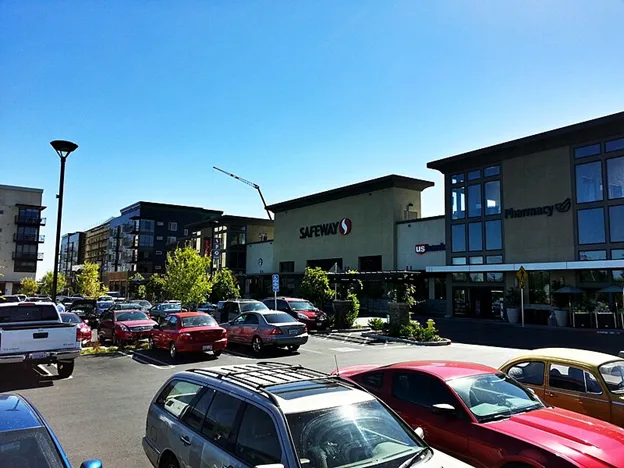Reshaping urban spaces, the rise of mixed-use developments, Transforming the future of urban spaces
Reshaping Urban Spaces: The Rise of Mixed-Use Developments
26 October 2024

Image by Haha169 from Wikimedia Commons
Cities worldwide are experiencing a profound shift in how urban spaces are designed and built. Mixed-use developments, which integrate residential, commercial, and recreational areas into a single, cohesive environment, are becoming a popular solution to the challenges of urbanization.
This trend not only creates more dynamic neighborhoods but also offers an innovative approach to urban planning that prioritizes sustainability and livability. For architects and planners, mixed-use developments represent a unique opportunity to rethink how cities function, all while addressing environmental concerns and population growth.
The Changing Face of Urban Development
The traditional approach to city planning often involved separate zones for living, working, and leisure activities. However, this outdated model is giving way to mixed-use developments, where diverse spaces coexist within the same area. These projects promote walkability, reduce commuting times, and encourage social interaction among residents. In a world where convenience and sustainability are increasingly important, mixed-use environments provide the framework for smarter urban growth.
Architects and planners have embraced this approach as it reflects a growing demand for well-rounded communities that offer more than just a place to live. Mixed-use developments enhance the overall quality of life by creating spaces where people can live, work, shop, and socialize in close proximity. Such projects also reflect changing lifestyles, particularly in urban areas with high density and limited space. These communities are designed to reduce the need for cars and foster a sense of connection between people and their surroundings.
Building Sustainable Cities
Sustainability is a key driver behind the rise of mixed-use developments. These projects reduce the environmental impact of urban living by encouraging the use of public transport, cycling, and walking. By integrating green spaces, energy-efficient buildings, and environmentally friendly materials, mixed-use developments help mitigate the effects of climate change. The focus extends beyond environmental concerns to include economic and social sustainability.
Incorporating residential, commercial, and recreational spaces into a single project allows for more efficient land use. Concentrating development within a smaller footprint helps reduce urban sprawl and preserve natural habitats. Mixed-use projects also contribute to the local economy by attracting businesses and creating jobs, all while supporting the community’s social fabric. From an architectural perspective, sustainability is not just about materials and construction methods; it’s about designing spaces that promote long-term well-being for both people and the planet.
Collaboration Between Architects and Urban Planners
Mixed-use developments require close collaboration between architects and urban planners, as these projects are far more complex than traditional single-use buildings. The process involves careful planning to ensure that all the elements of the development work together seamlessly. Public spaces must be thoughtfully designed to encourage interaction. At the same time, private areas must offer the comfort and amenities that residents expect. Retail and commercial spaces must be positioned to attract foot traffic while also maintaining harmony with the surrounding environment.
One of the biggest challenges in designing mixed-use projects is balancing the needs of different stakeholders. Architects must create spaces that are aesthetically pleasing and functional. At the same time, urban planners focus on how these spaces fit within the city’s larger context. Successful mixed-use developments require constant communication between teams, ensuring that all project elements come together smoothly. These projects often involve innovative architectural solutions, such as vertical gardens or rooftop terraces, that maximize space and enhance the overall experience for residents and visitors.
The Legal Landscape of Mixed-Use Projects
While mixed-use developments are an exciting opportunity for urban innovation, they come with significant legal and regulatory hurdles. Managing construction contracts and navigating zoning laws are complex aspects of these multifaceted projects. Developers must work closely with a construction law firm to ensure that all legal requirements are met throughout the process—from land acquisition to final approvals.
Zoning laws, in particular, can be a significant obstacle. Many cities have strict regulations about land use, and mixed-use developments often require zoning changes or special permits. It’s critical to consult legal professionals who understand the nuances of these regulations and can help navigate the approval process. Additionally, construction contracts for mixed-use projects can be complicated due to the variety of stakeholders involved. Legal teams are crucial in ensuring that these contracts are fair and enforceable, protecting the interests of everyone involved.
Community Engagement and Public Spaces
A key element of successful mixed-use developments is creating public spaces that unite people. From parks to plazas to community centers, these shared spaces create a connection among residents. Public spaces serve as the heart of mixed-use communities, allowing people to relax, socialize, and engage with their surroundings.
Community engagement is essential in the design and planning phases of these projects. Developers and planners often work with the people living and working there to ensure the projects meet their needs and expectations. This collaboration builds a sense of ownership and pride within the community, ultimately leading to more vibrant and successful neighborhoods. Public spaces, when well-designed, can become focal points for social interaction and cultural exchange, enhancing the overall appeal of the development.
Challenges and Opportunities in Mixed-Use Development
While mixed-use developments offer many benefits, they are not without challenges. The complexity of these projects requires significant planning and coordination and a willingness to think creatively about urban spaces. Balancing the needs of residential, commercial, and recreational spaces can be difficult, especially in densely populated areas where land is limited. However, these challenges also present opportunities for innovation in architecture and urban planning.
The future of urban development lies in the ability to design spaces that are not only functional but also sustainable, inclusive, and adaptable to changing needs. Mixed-use developments represent a bold step forward in this direction, offering a blueprint for more livable, efficient, and environmentally friendly cities. As cities continue to expand and evolve, mixed-use projects will become increasingly important in shaping the urban landscape of the future.
Designing for the Future: A New Urban Vision
As we look ahead to the future of urban development, it’s clear that mixed-use projects are here to stay. They reflect a shift in the wider perception of cities and their role in people’s lives. By blending residential, commercial, and recreational spaces, mixed-use developments create vibrant, sustainable, and resilient communities. For architects, planners, and developers, these projects offer an intriguing opportunity to redefine how we live and interact with our urban environments.
Comments on this guide to Reshaping Urban Spaces: The Rise of Mixed-Use Developments article are welcome.
Urban Design
Urban design and its importance in creating better cities
Timber Cladding in Urban Architecture
Buildings
Contemporary Property Articles – recent architectural selection from e-architect below:
London Architecture Designs – chronological list
Comments / photos for the Reshaping Urban Spaces: The Rise of Mixed-Use Developments page welcome





